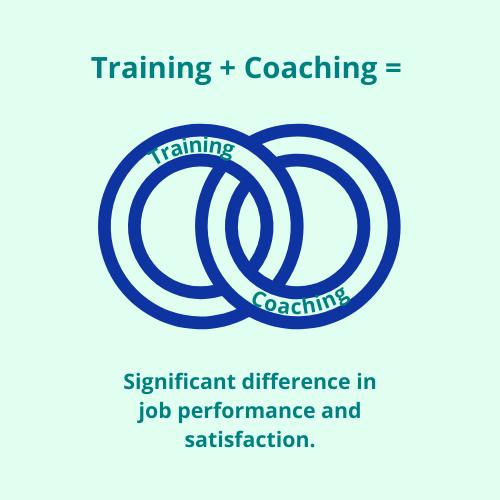
In a study conducted by Deborah Bright & Anita Crocket and published by Coaching magazine (An International Journal of Theory, Research and Practice) shows that training combined with coaching can make a significant difference in job performance and satisfaction.
Coaching in organizations is often limited to High Potential employees and varying levels of management for a specific duration of time, typically lasting six months. The Strategies for Enhancing Performance Initiative introduces a more simplified usage of coaching and one that has potential to address a much larger audience. The Strategies for Enhancing Performance Initiative began in 2003 and involved 115 workers in an experimental/control design. The purpose of the study was to identify, test and measure the most effective Performance Control Practices used in the workplace to increase performance while simultaneously mitigating the negative effects of stress. Participants took part in a 4-hour traditional classroom-based training program, followed by one individual 30-minute phone coaching session with an external coach 3–4 weeks after the training program. The results for the experimental group, when compared to the control group, showed a significant difference in their ability to identify solutions to issues that positively impacted their work to be done, their effectiveness when being criticized, their heightened ability to deal with changing priorities and more effectively dealing with tight deadlines and turning around assignments. The experimental group also showed an increased adeptness for articulating ideas more clearly and concisely when compared to the control group.
According to Yuquan Holloway the following is an effective approach:
- Ahead of training, ensure that the trainee has a project or related problem to bring to the training course. It will give them something to work through and apply the things that they are learning to like a signpost.
- Pairing coaching with training for a 3–6-month time period after the course is very beneficial for the trainee. The trainee is encouraged and supported as they try on their new skills. They can run their thoughts by an objective and knowledgeable partner. The class time extends for them, and they get more real-world examples.
- Checking in with the trainee at a specific cadence (about every two weeks) ensures that they stay on the journey of putting the new tools into practice, especially during the first month or so. It’s always nice to have a non-judgmental accountability partner. Think effective fitness trainer.